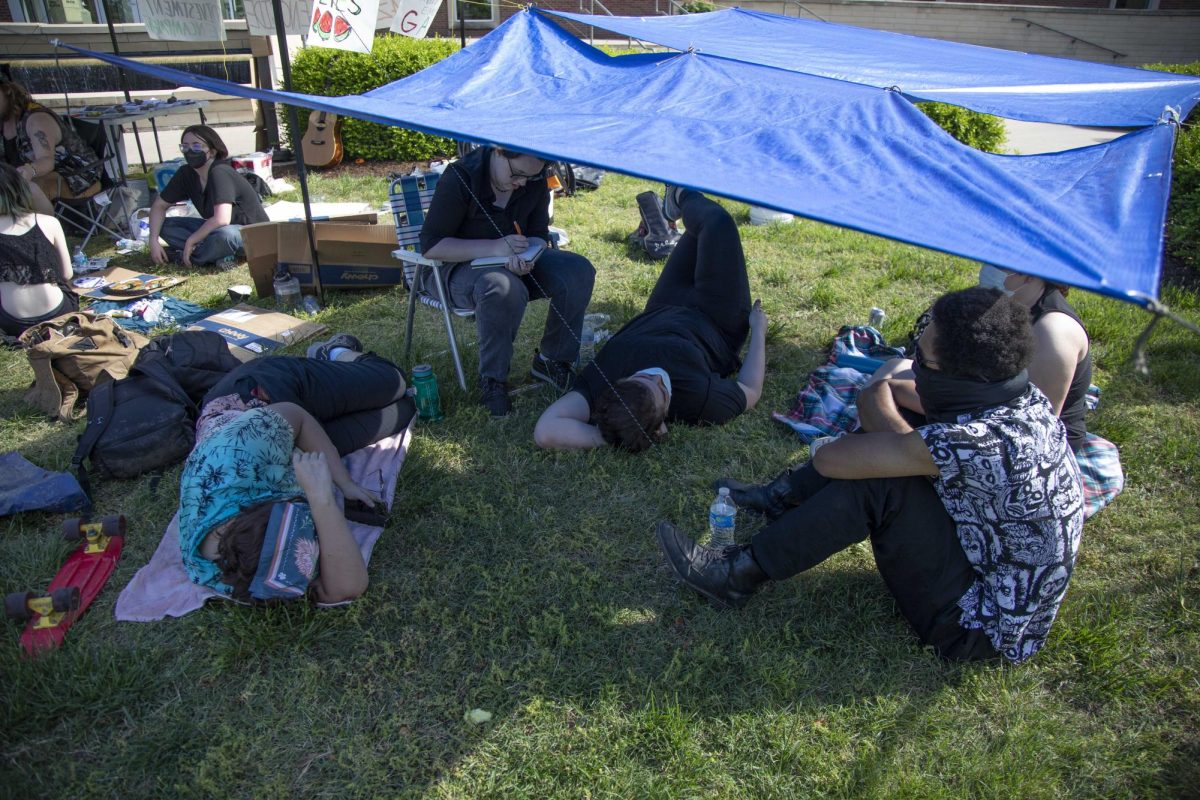Audiences may ‘crave’ answers, but play is about experience
March 21, 2012
The Christian H. Moe Theater may be whited out for this weekend’s performances of “Crave,” but that may provide a blank slate for the audience members to come to their own conclusions.
“For this play, instead of asking what is it about, ask yourself how does it make you feel,” said actor Thomas Campbell, who as the dramaturge, researched the play and designed the lobby exhibits.
The play, written in 1998 by the late British playwright Sarah Kane, will be showing at the Moe Theater tonight through Sunday.
Advertisement
Campbell said the play is abstract, and the key to understanding it probably lies in the title itself. While it is open to interpretation, he said the play is very much about the desire to fill an emotional void.
Director Gabriela Ponce said she chose it as her final production for her master’s because it presents such a challenge in putting on the stage.
The script provides no stage direction, idea of setting or time, and it refers to the four characters as A, B, C and M.
Ponce’s dramatic vision of how to stage the performance, though, came naturally.
“From the first time I read it, it was white,” she said.
She said the lack of color relates to the characters’ inability to feel.
She worked with set designer Ron Naversen, professor of theater, in creating the almost completely white space in which the performance takes place.
Advertisement*
To cover the high walls of the Moe Theater, Naversen said he bought cheap fabric gossamer, which is often used in decorating for high school proms.
They also painted the floors white and built a multi-level white stage, he said. The front-row seats are white, and the props on the stage, including magazines and salon chairs, are monochrome.
Naversen said the white walls also serve as a good screen for projecting the video piece that accompanies the performance.
The white theme extends to the costumes, which costume designer Casey Watkins said was another challenge.
“White on white is hard to do,” she said.
To create visual interest in the costumes and hint at the characters’ emotional scars, Watkins said she focused on texture and layered a number of different materials in each piece, and she even incorporated doll hair.
Ponce said the cast has had to be creative as well in their interpretations of the characters. Since the script provides so little information, she and the cast had to collaborate closely and create a common language with which to talk about the play, she said.
The cast jumped into it with enthusiasm and adventurousness, she said.
Campbell, who portrays “B,” said he doesn’t even think of the roles as characters so much as figures, who stand in for ideas or feelings.
And it’s a feeling that Ponce said she wants audience members to embrace.
She said audiences will have to adjust their typical expectations for things such as plot and instead open themselves up to the overall experience of watching the performance and the self-reflection it encourages.
Despite the challenges that “Crave” posed in terms of staging and the challenges it poses for audience members, Ponce said it has offered a great opportunity for creativity.
“This is the theater that I want to do,” she said.
Advertisement







